Prof. Jim Stark supervised a bronze pour in the Sculpture Studio at Binghamton University on December 2, 2005. Approximately 50 molds were taken from two kilns and silicon-bronze heated to about 2050 degrees Fahrenheit was poured into those molds to make bronze casts of the student projects. Here are some pictures I took of the key steps of the process. First is the large kiln used to heat the molds, removing the wax sculptures inside and leaving the negative space into which the bronze will be poured. Second is the furnace in which the bronze is heated in a crucible to over 2050 degrees. Both new ingots and extra used bronze from previous pourings are melted down in the furnace. Under the careful guidance of Prof. Stark, the students dressed in protective gear use the winch to lift the hot crucible from the furnace. Impurities in the bronze float to the top and are skimmed off the surface, and certain chemicals are added to absorb and remove gases from the molten metal. The winch is again used with a different holder to lift the full crucible into position near the molds. The molds have been placed on a layer of dirt and are surrounded by more dirt held in frames or rings, to catch any molten metal that spills during the pouring. Pairs of students take turns to tip the crucible using the special holder, taking care to get the metal into the cup-shaped openning carved into the mold. That is the entry point which guides the metal down to the bottom of the mold, where it fills the negative space from bottom up, forming the desired sculpture with the help of gating pathways and vents for air to escape. Molds are made in cylindrical sheet metal shells and can be as small as two feet high for little sculptures, or as tall as five feet high for big ones. The winch is needed to move the massive ones and all the hot ones after the pouring. After the metal has cooled, the molds are broken open by force (hit with hammers or dropped to break up the dry and brittle mold material) and the cooled bronze inside, including gating, must be carefully cleaned before the excess metal is removed by carbon arc welder or by edge grinder. There is still a lot of work to get a polished sculpture!
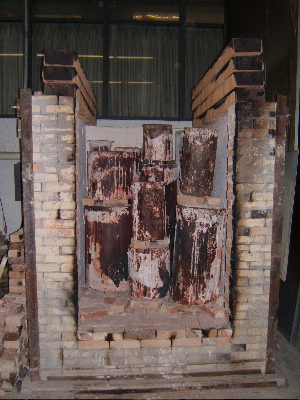
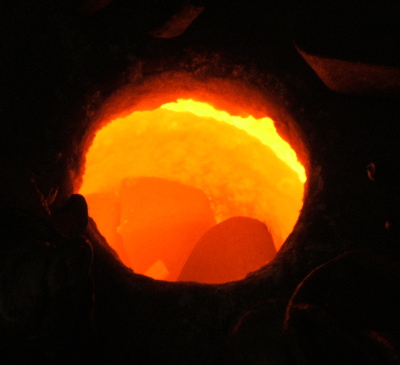
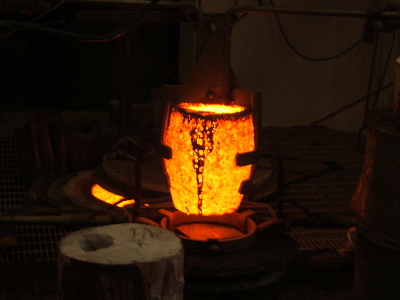
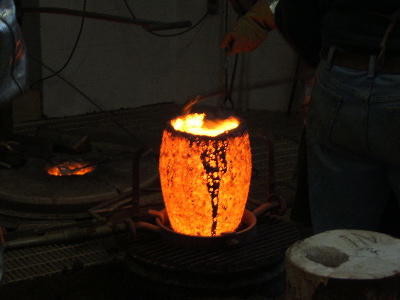
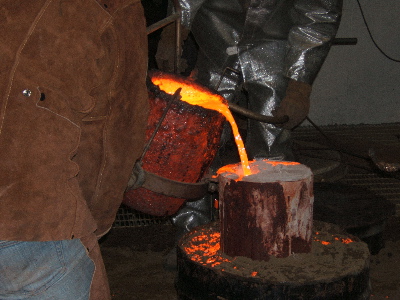
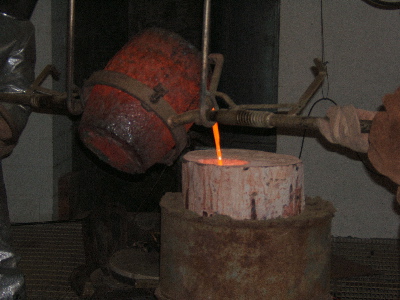
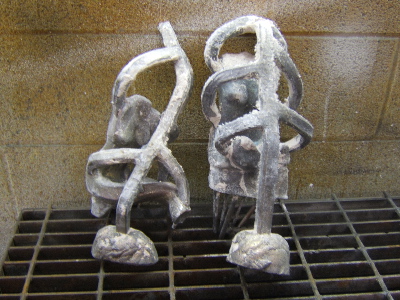
Links back to:
Webpage of Alex Feingold,
Department of Mathematical Sciences,
Binghamton University.